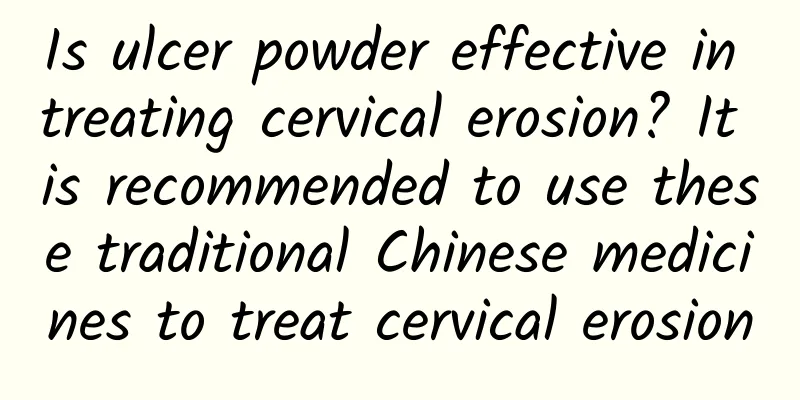Is cervicitis intrauterine adhesion?

|
Cervicitis is not intrauterine adhesion. They are completely different diseases. Cervicitis refers to inflammation of the cervix, which is mostly caused by infection or external stimulation; while intrauterine adhesion is partial or complete adhesion of the uterine cavity due to damage to the uterine lining. There are significant differences in the causes, symptoms and treatments of these two diseases. 1. Causes and treatment of cervicitis Cervicitis is often caused by infection with bacteria, viruses (such as human papillomavirus HPV), excessive stimulation or injury. Common risk factors include: unclean sexual life, excessive vaginal cleaning, cervical damage during childbirth or abortion, etc. Treatment method: -Drug treatment: For acute cervicitis, antibiotics such as tetracycline, metronidazole, etc. can be used for bacterial infections, while viral infections may require the combination of antiviral drugs. -Physical therapy: Chronic cervicitis may be treated with cryotherapy, laser therapy, or electrocautery, which can remove inflamed tissue and promote healing of damaged areas. -Daily care: Clean the vulva properly, avoid frequent vaginal douching, and maintain daily hygiene. At the same time, avoid unclean sexual life and perform cervical cancer screening regularly. 2. Causes and treatment methods of intrauterine adhesions Intrauterine adhesions are usually related to damage to the endometrium, common causes include artificial abortion, cesarean section, uterine surgery or endometrial infection (such as tuberculous endometritis). This condition can lead to abnormal menstruation or even amenorrhea, infertility and periodic pain in the lower abdomen. Treatment method: -Surgical treatment: Hysteroscopic adhesion lysis is the most common treatment method. The surgery can separate adhesions and restore the normal uterine cavity structure through precise vision. -Drug assistance: After surgery, the doctor may prescribe estrogen drugs to promote the growth of the endometrium and prevent adhesions from occurring again. -Postoperative care: Avoid postoperative infection and pay attention to personal hygiene. If necessary, the doctor will place a uterine stent to maintain the shape of the uterine cavity. 3. The difference between cervicitis and intrauterine adhesions -Disease location: Cervicitis occurs in the cervix, while intrauterine adhesions affect the interior of the uterine cavity. -Main symptoms: Cervicitis is characterized by increased vaginal discharge, odor, and pain during sexual intercourse; intrauterine adhesions are mainly characterized by pain caused by abnormal menstruation, infertility, or menstrual reflux. -Diagnosis method: Cervicitis can usually be diagnosed through gynecological examination or vaginal discharge testing, while intrauterine adhesions require B-ultrasound examination or hysteroscopy to confirm the diagnosis. Cervicitis and intrauterine adhesions are two different diseases. Although they may occur together in some cases, targeted measures need to be taken for diagnosis and treatment. If similar symptoms occur, it is recommended to see a doctor for a comprehensive examination as soon as possible to identify the cause and receive the correct treatment. At the same time, paying attention to relevant preventive measures in daily life will help reduce the risk of disease. |
<<: Female adnexitis recurs repeatedly
>>: Do I need to check for cervical erosion?
Recommend
How to get your period back after amenorrhea
Amenorrhea can be restored by adjusting lifestyle...
Reasons why cervical erosion is difficult to cure
Cervical erosion is a gynecological disease that ...
What should you pay attention to before abortion?
Nowadays, more and more female friends choose abo...
How to care for endometrial thickening during treatment
How to take care of the thick endometrium during ...
What is the reason for having menstruation once every two weeks? What should I do?
Menstruation once every two weeks is usually a ma...
How can women prevent infertility caused by artificial abortion? There are three ways to prevent infertility caused by artificial abortion.
With the development of society, there are more a...
What are the symptoms of irregular menstruation?
What are the symptoms of irregular menstruation? ...
How to have an abortion two weeks into the pregnancy? What are the precautions for having an abortion two weeks into the pregnancy?
If a woman who is two weeks pregnant wants to hav...
What kind of examination should be conducted to prevent cervical hypertrophy?
The examination of cervical hypertrophy is genera...
It is important for expectant mothers to eat the right food to avoid miscarriage and premature birth
It is extremely important for expectant mothers t...
What are the early symptoms of ovarian cancer? Which 8 types of people are most likely to get ovarian cancer?
What are the early symptoms of ovarian cancer? Wh...
What should pregnant women with hyperprolactinemia supplement?
Prolactin is a polypeptide hormone, one of the ho...
New Taipei City sampled two school lunch boxes for residual pesticides
The New Taipei City Government’s Health Bureau an...
What are the major measures to prevent cervicitis?
Cervicitis is one of many gynecological diseases....
Taught by fitness trainer himself! OLs must know 4 steps to develop a beautiful buttocks
Is the basic squat exercise too beginner for you?...









